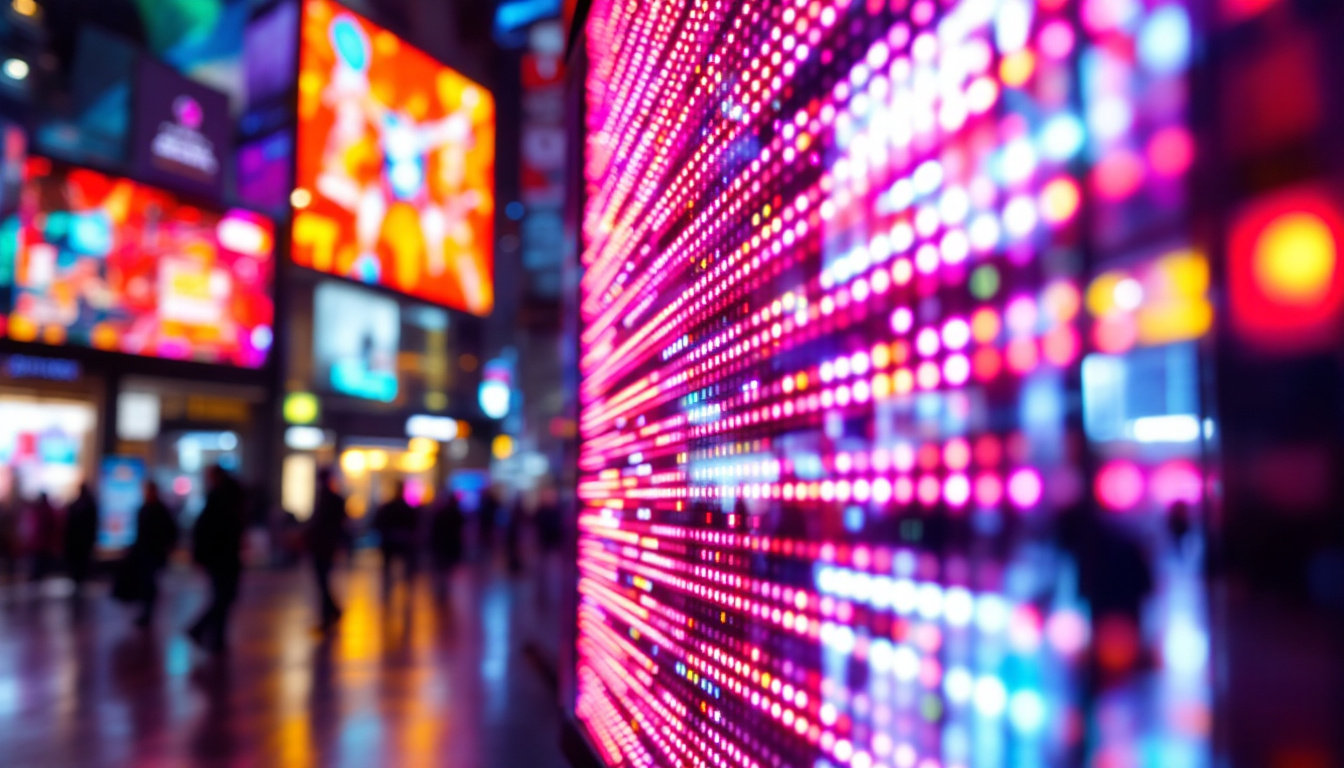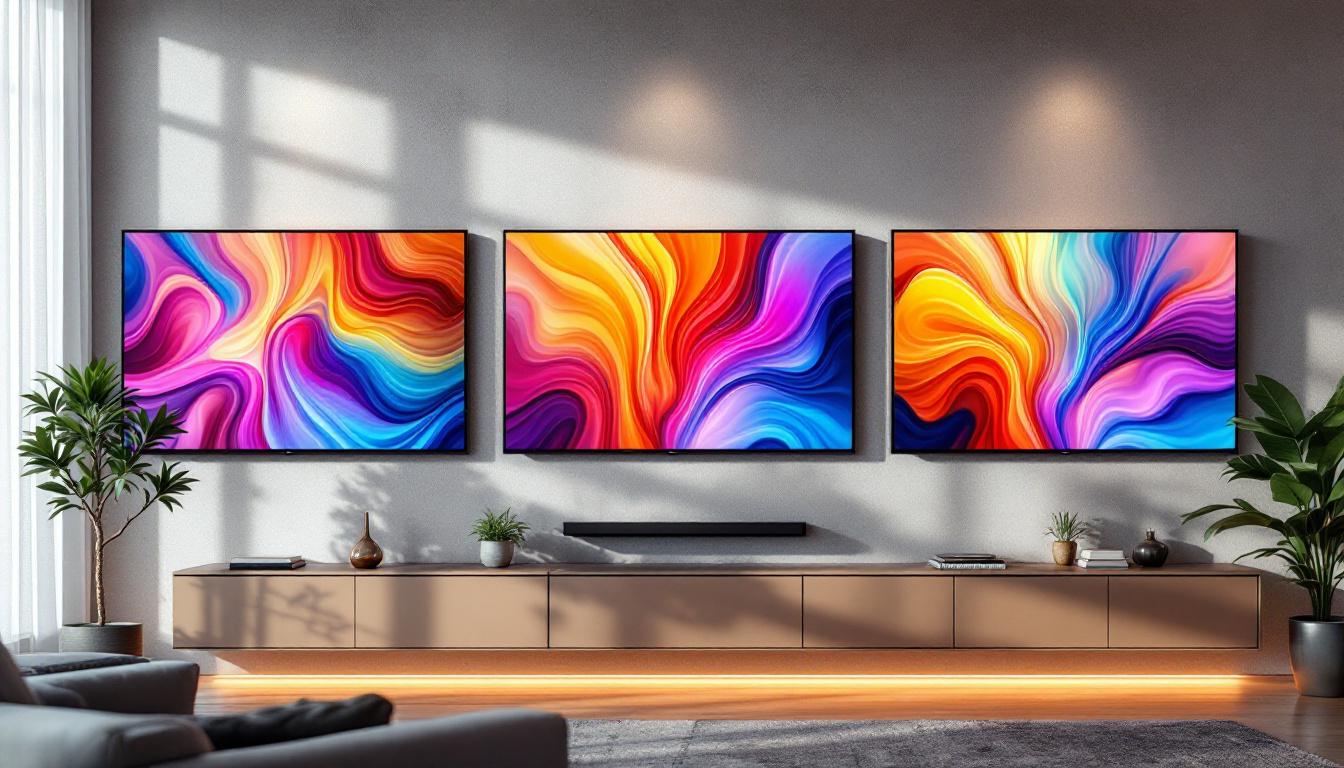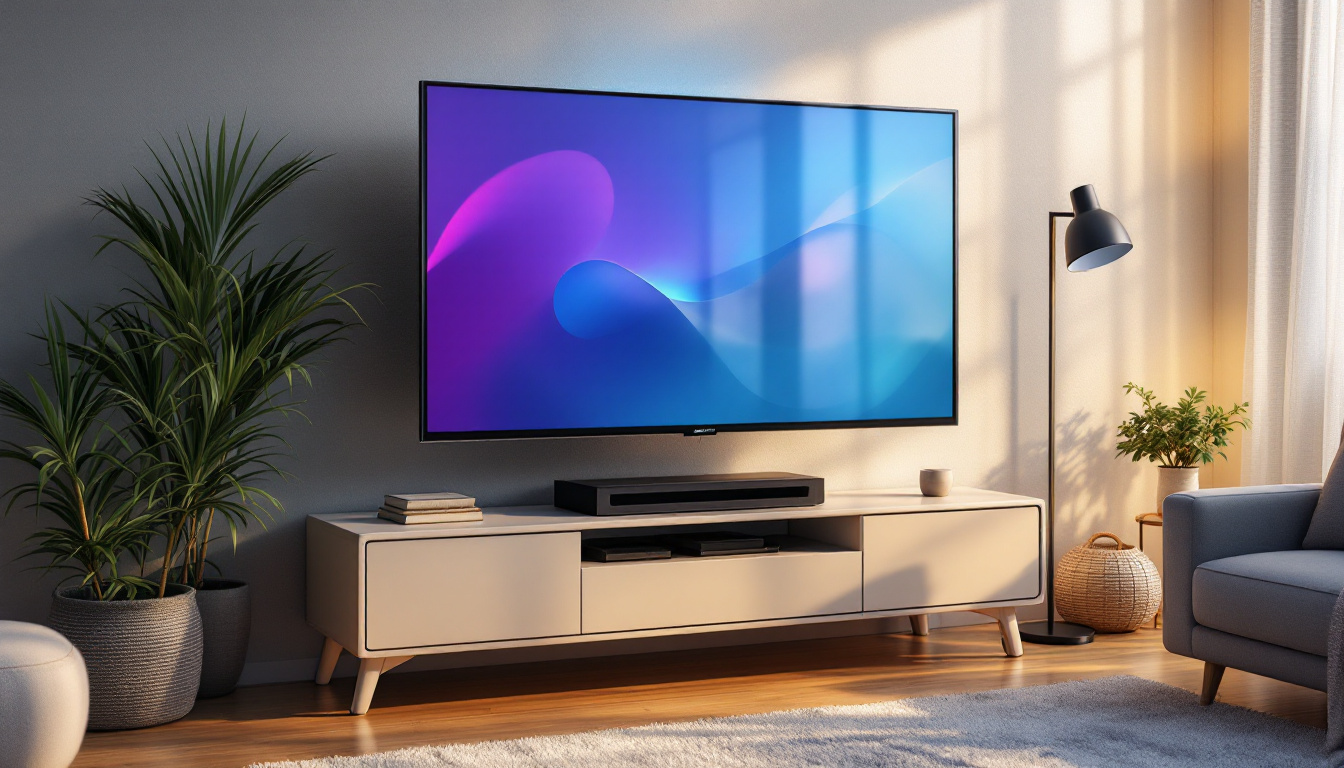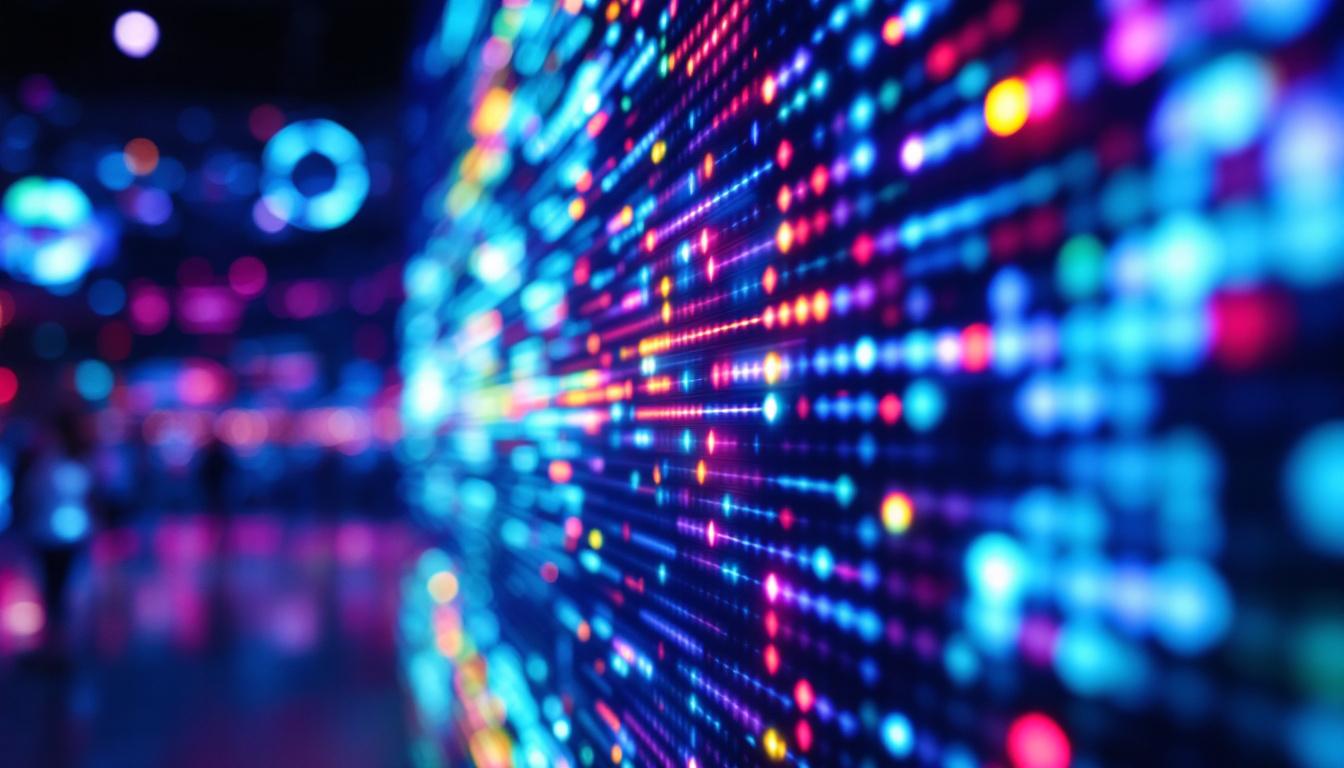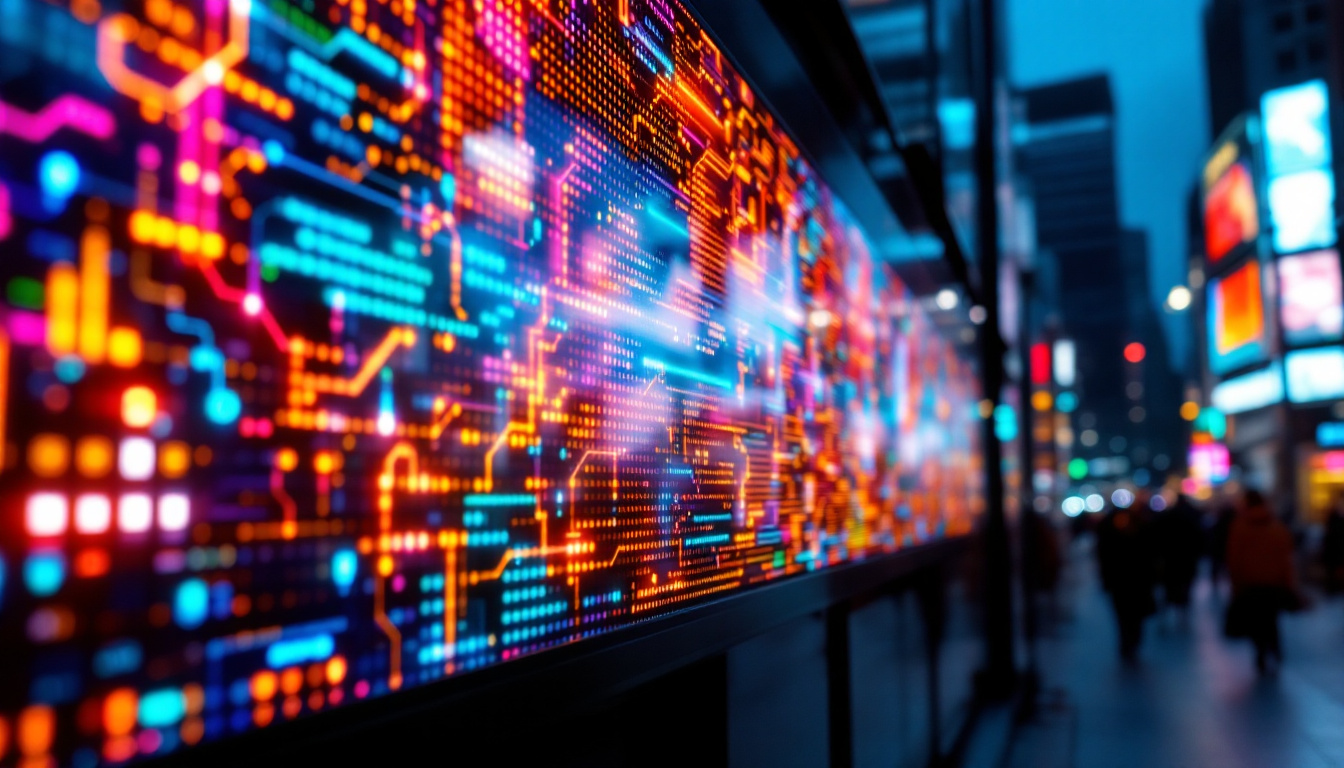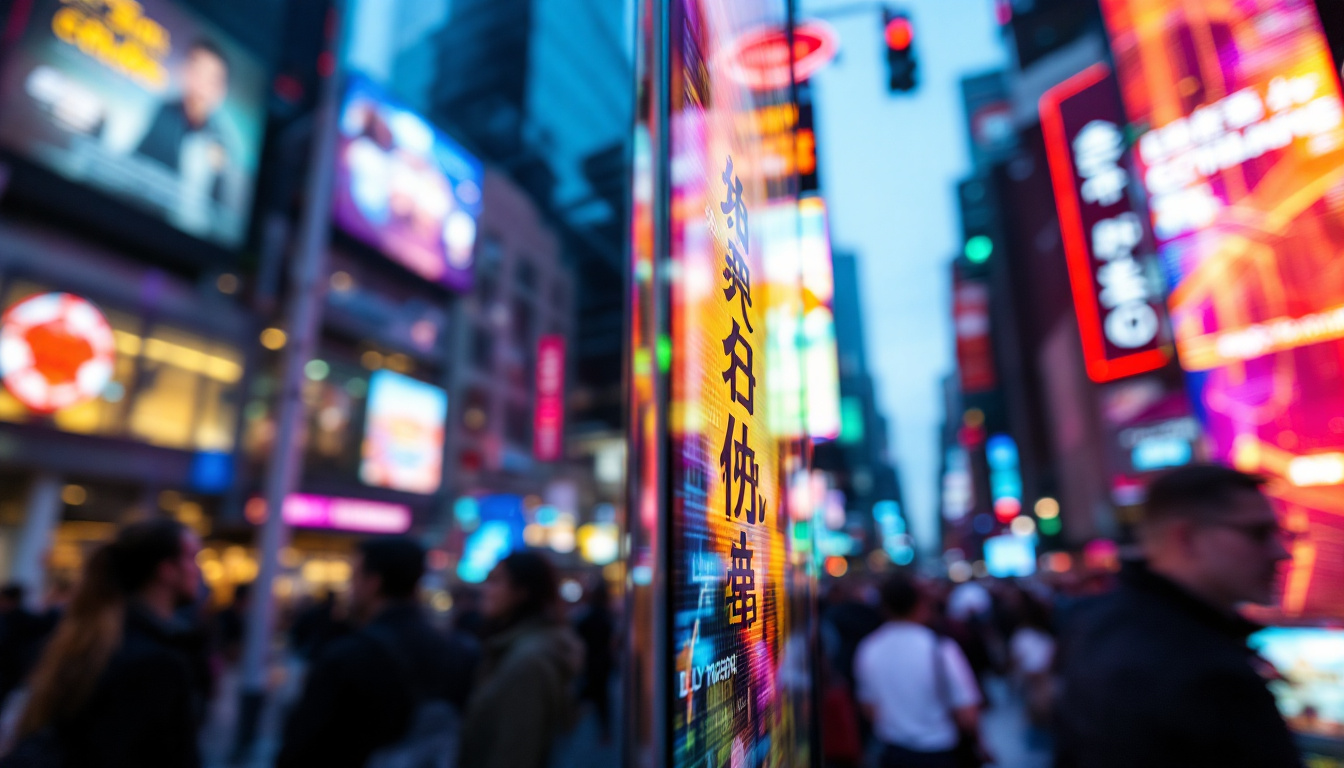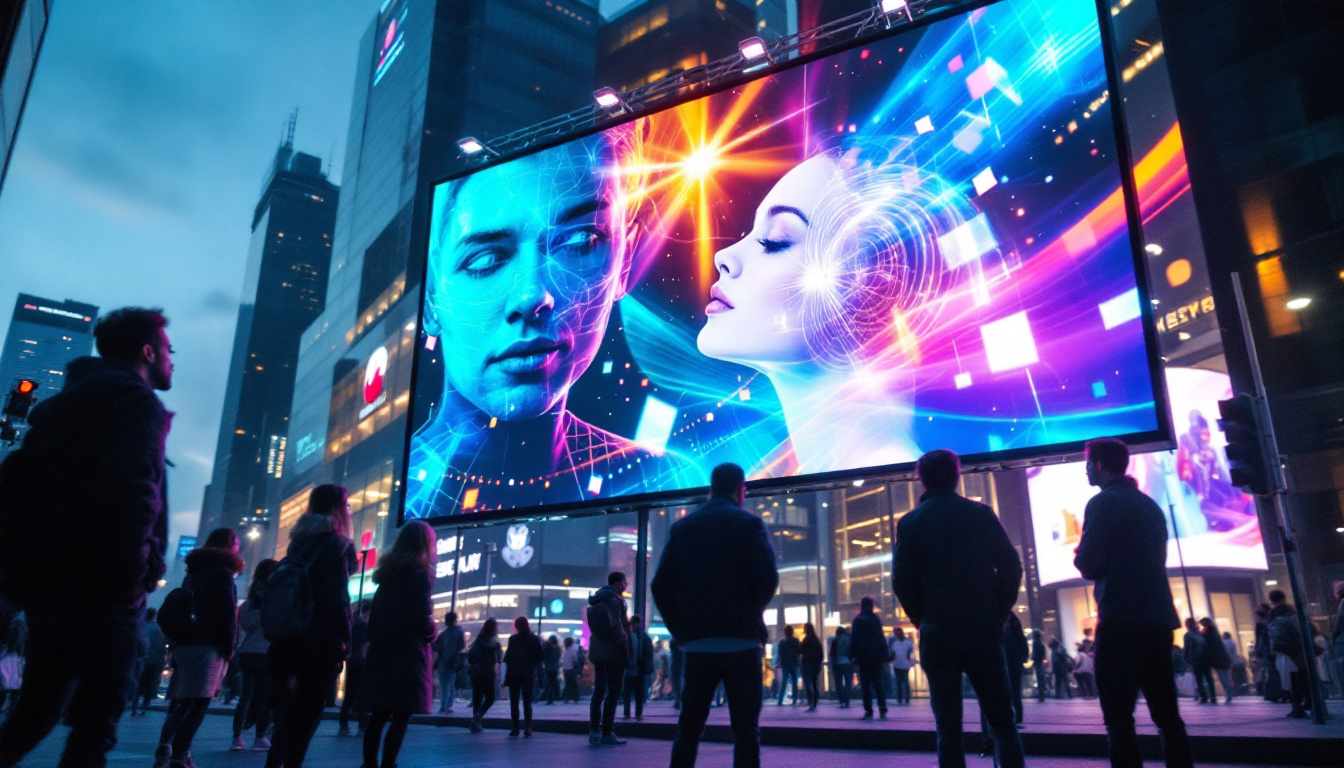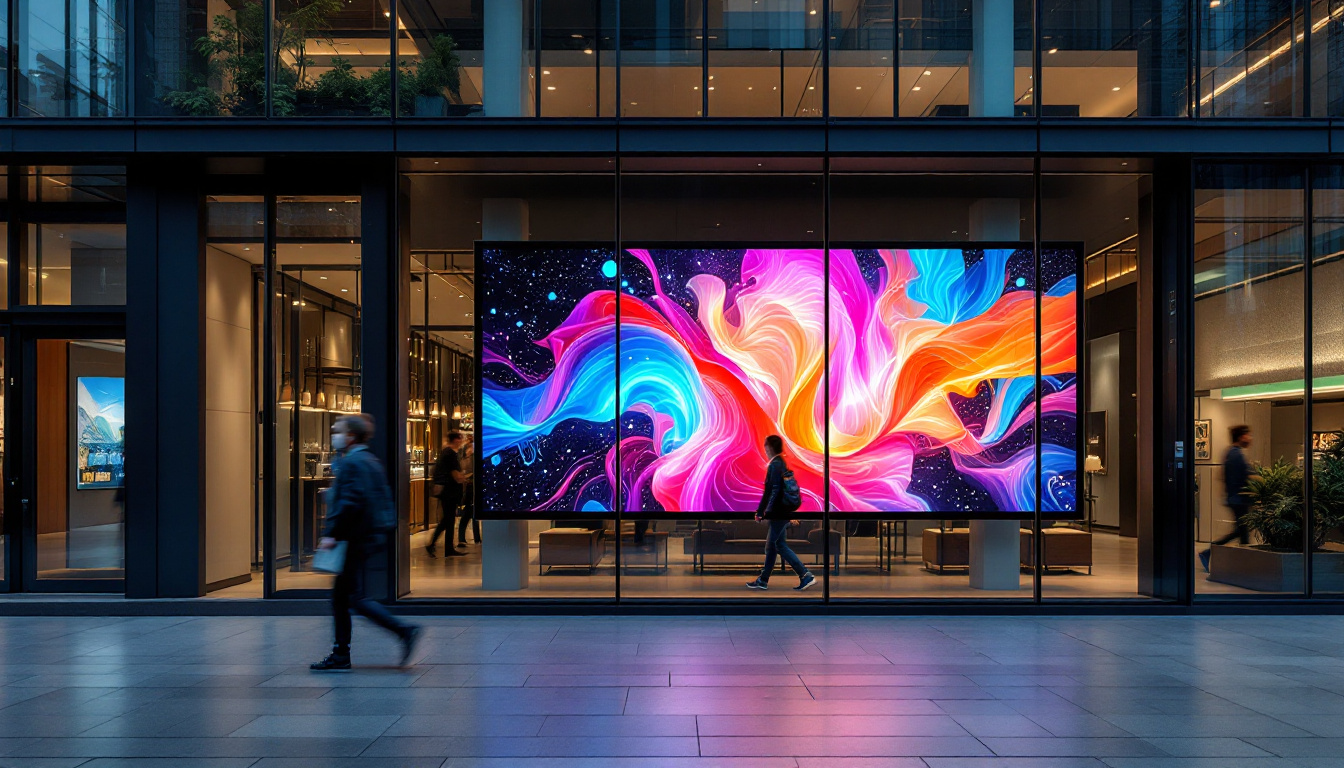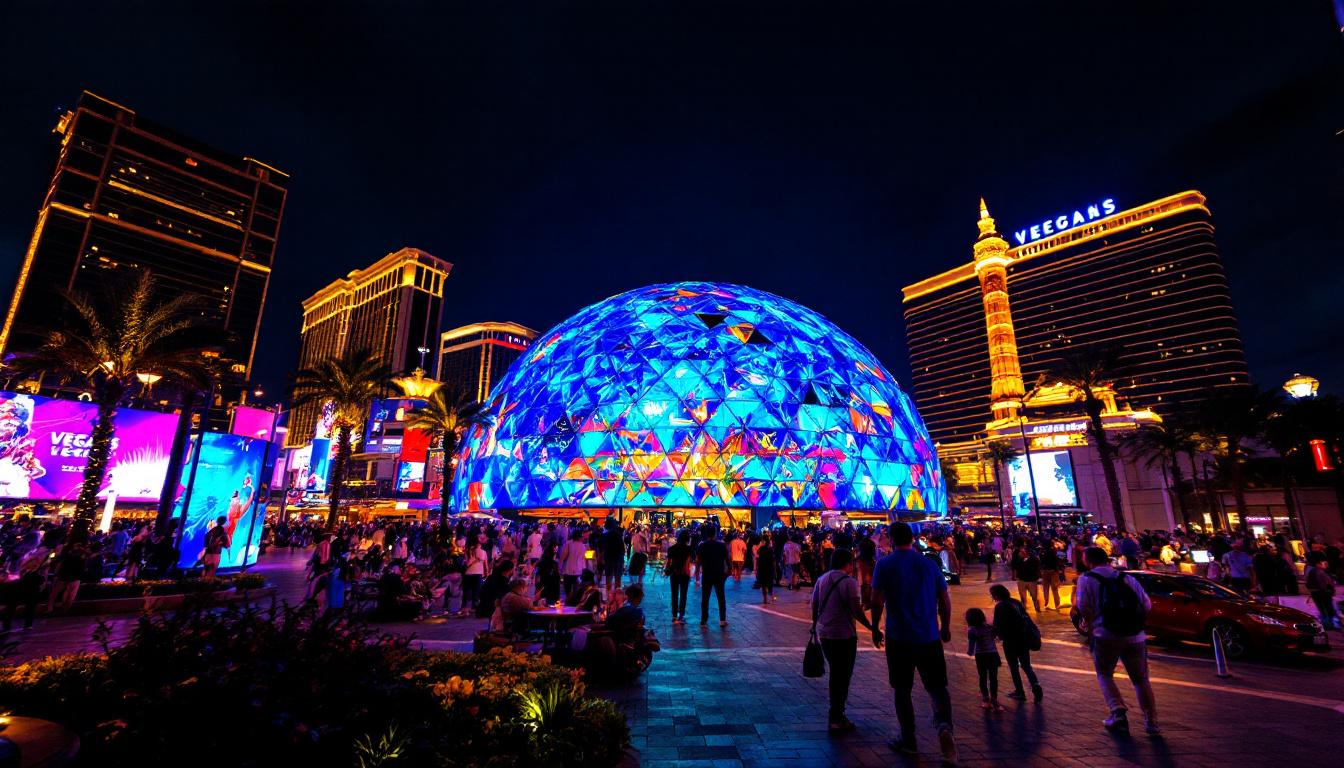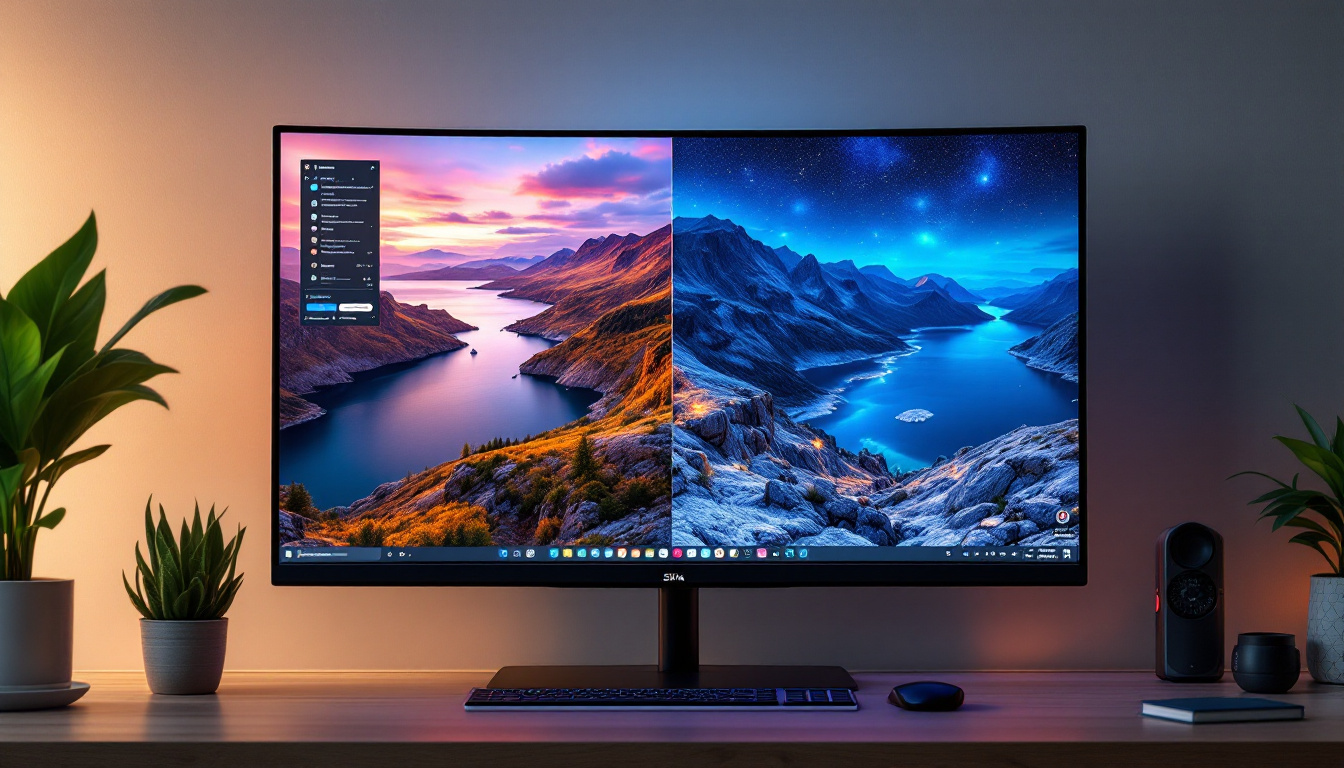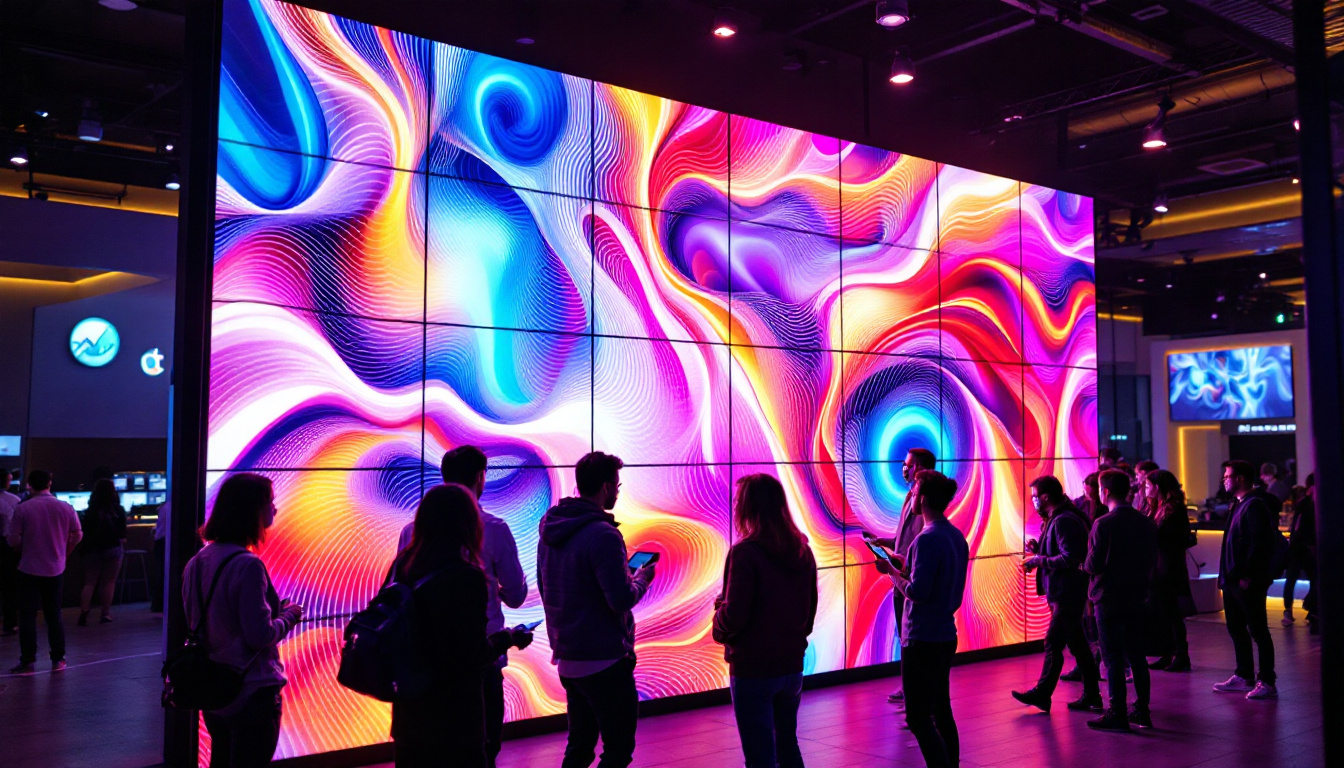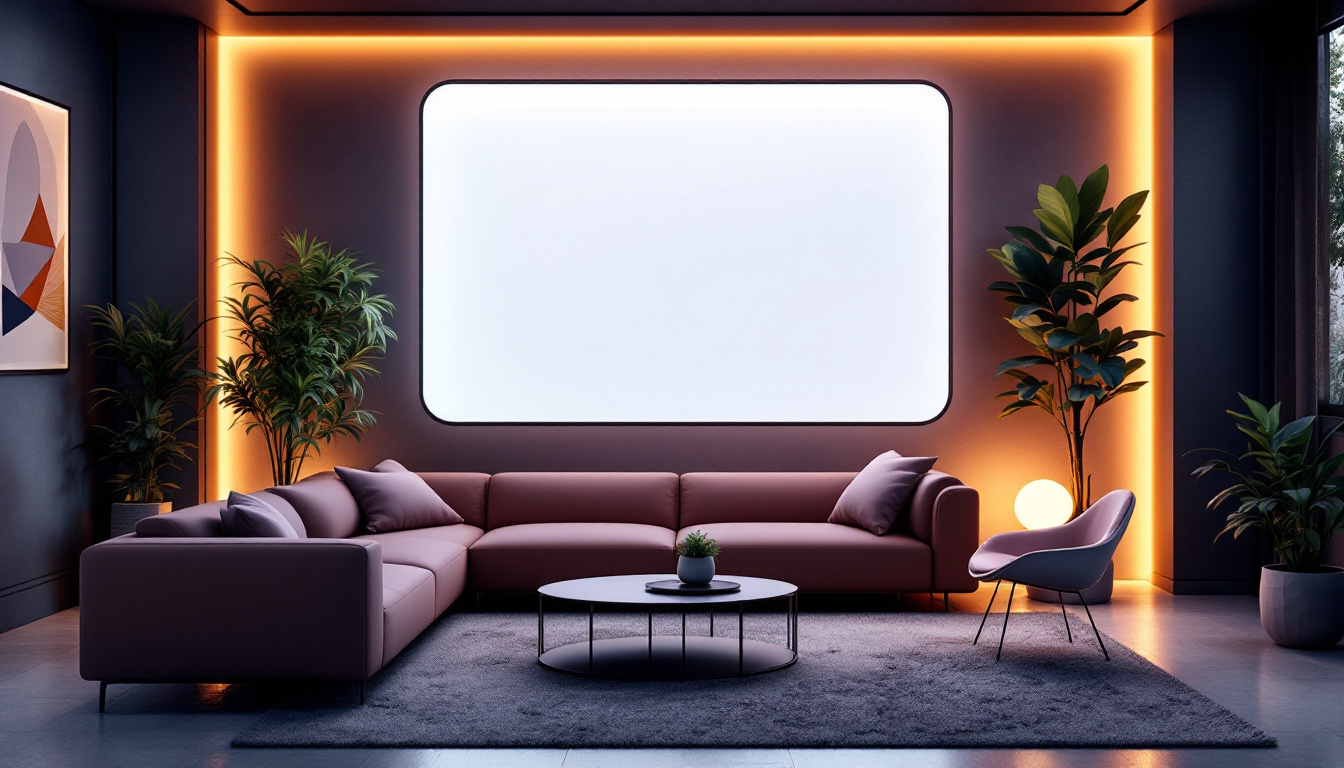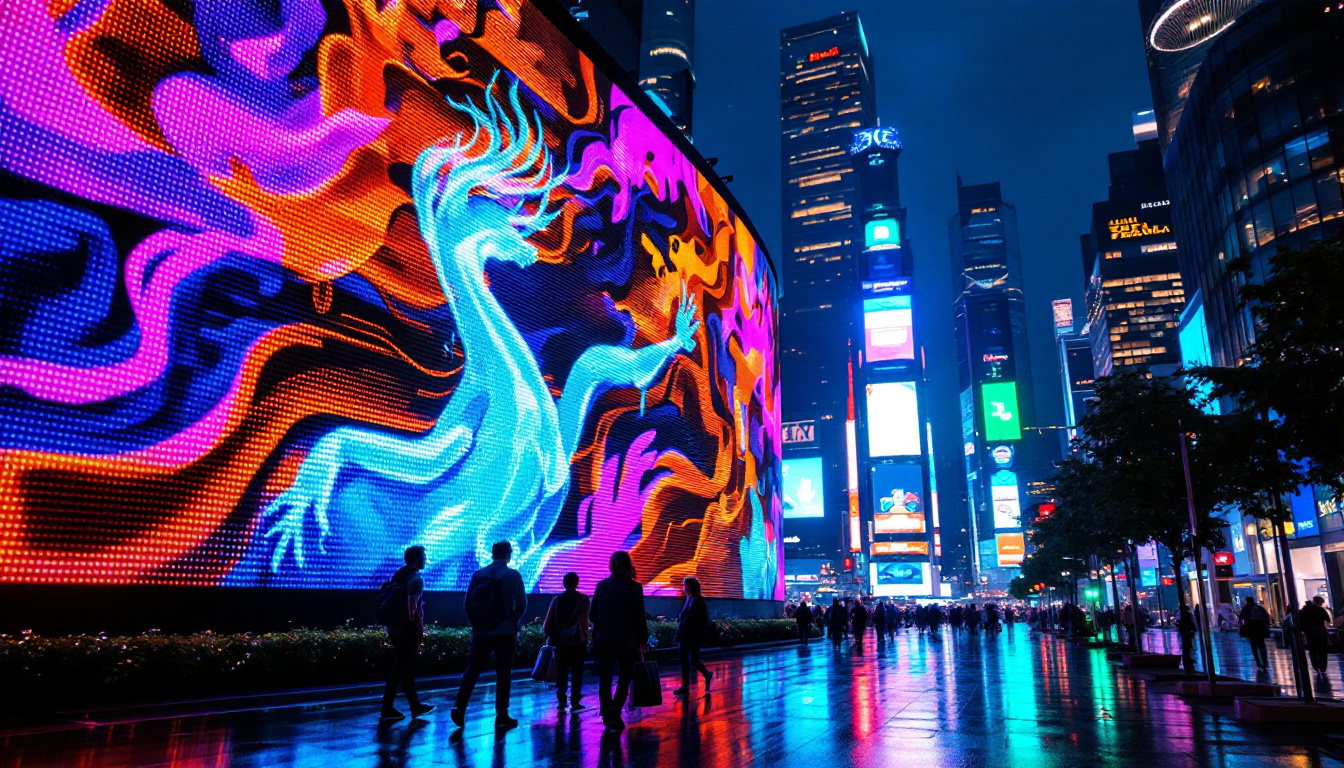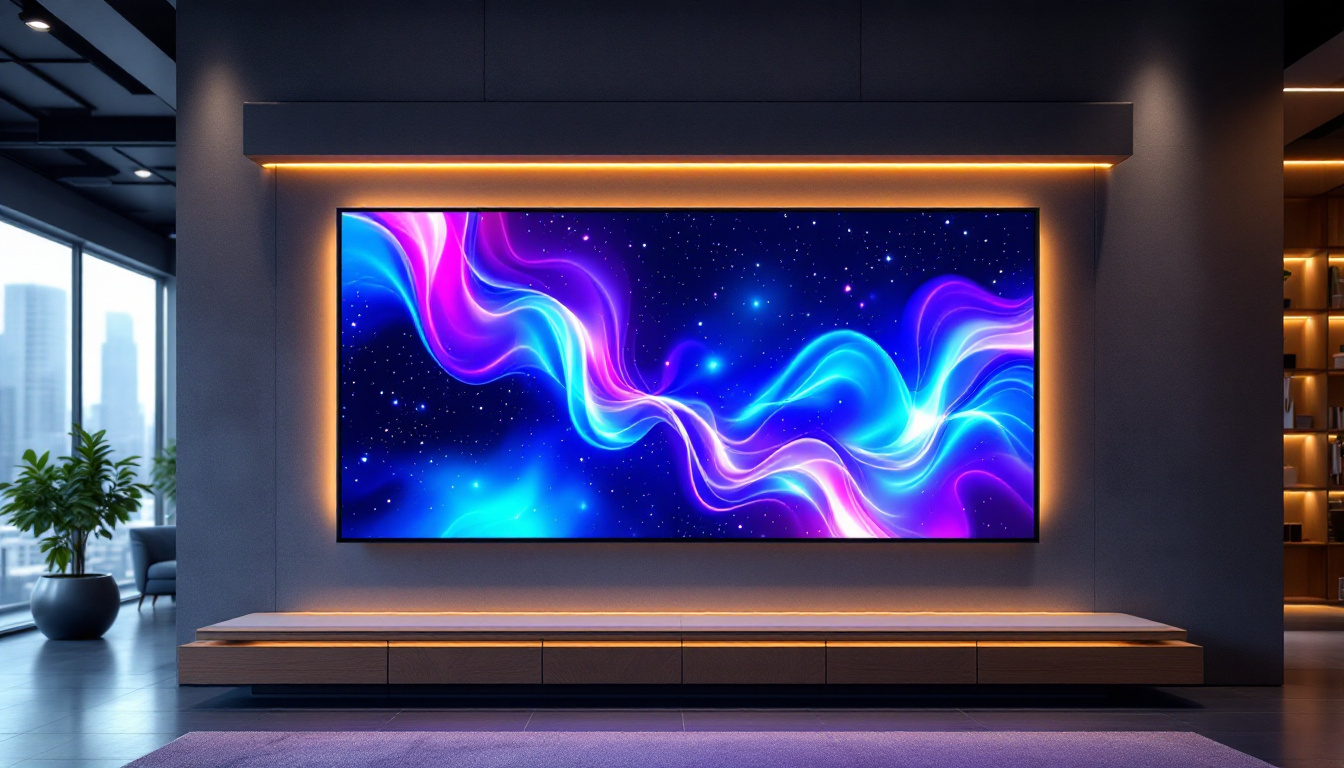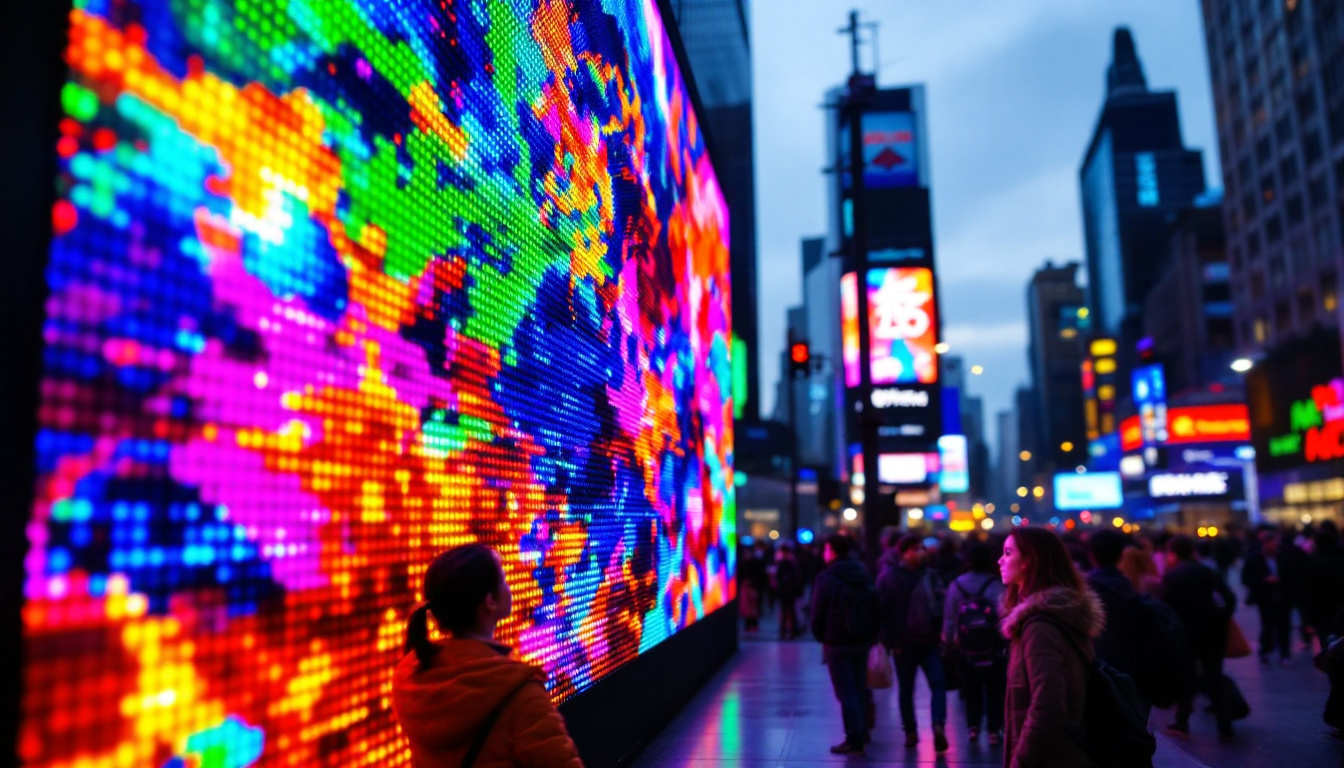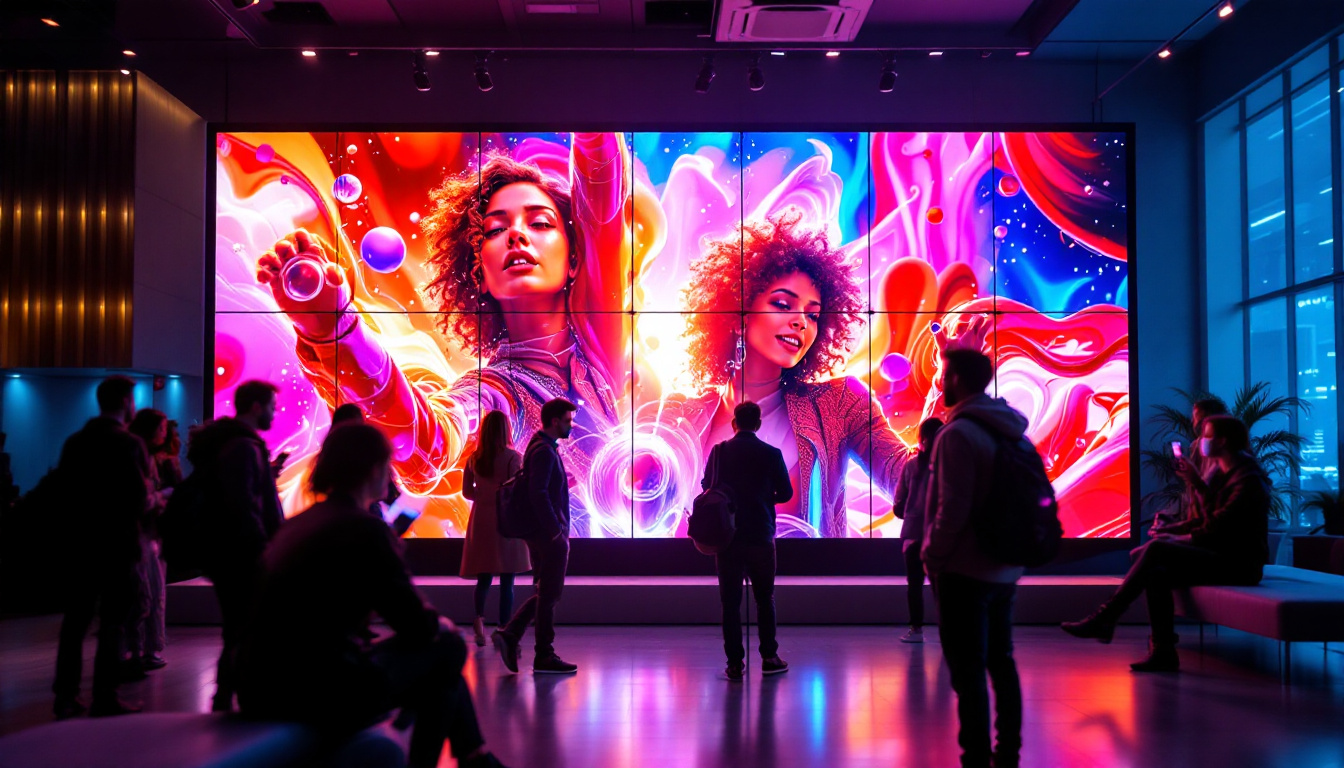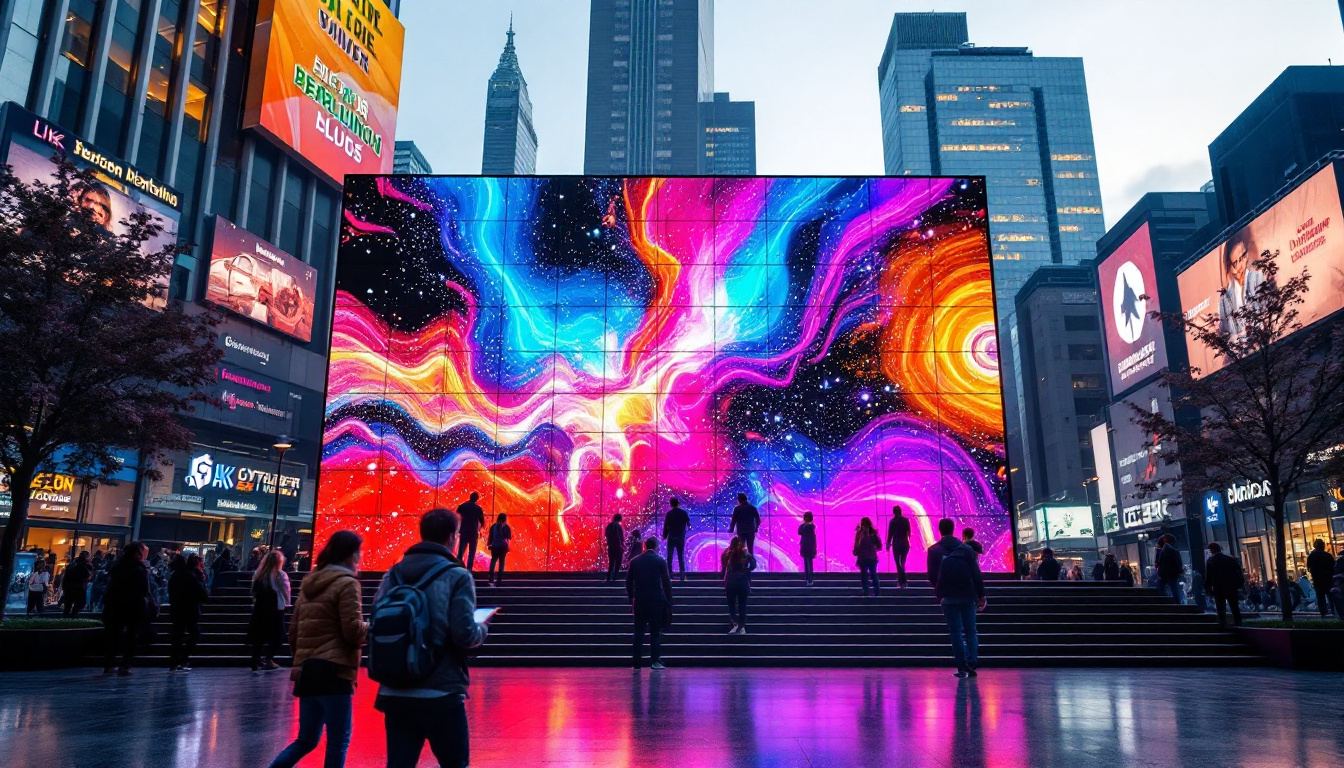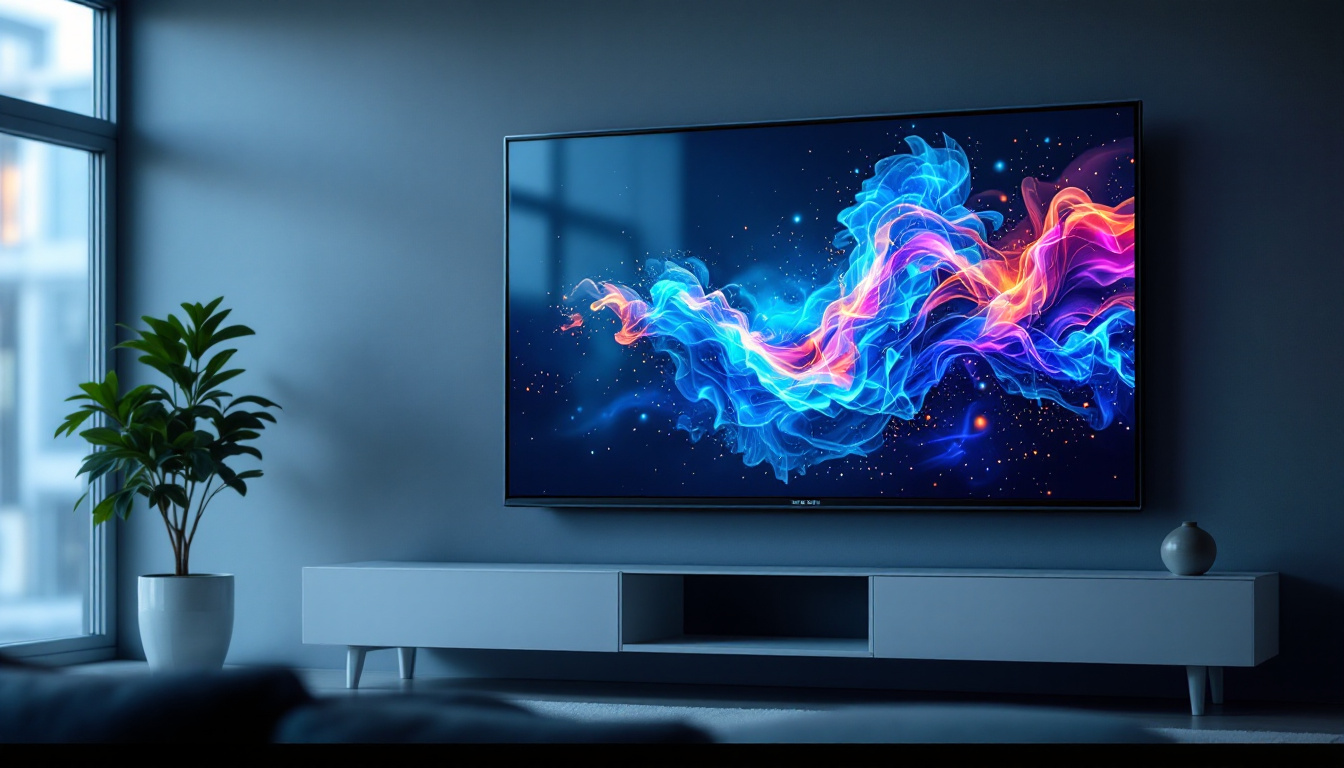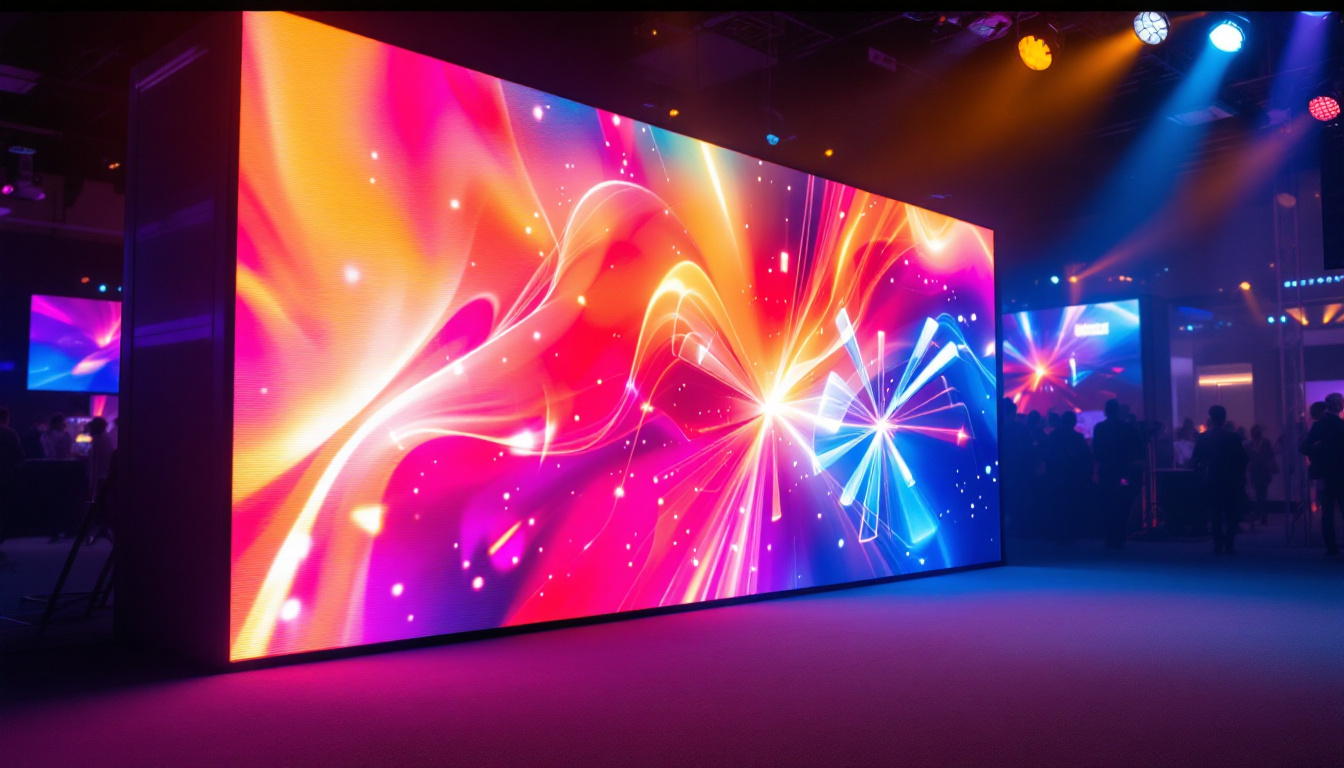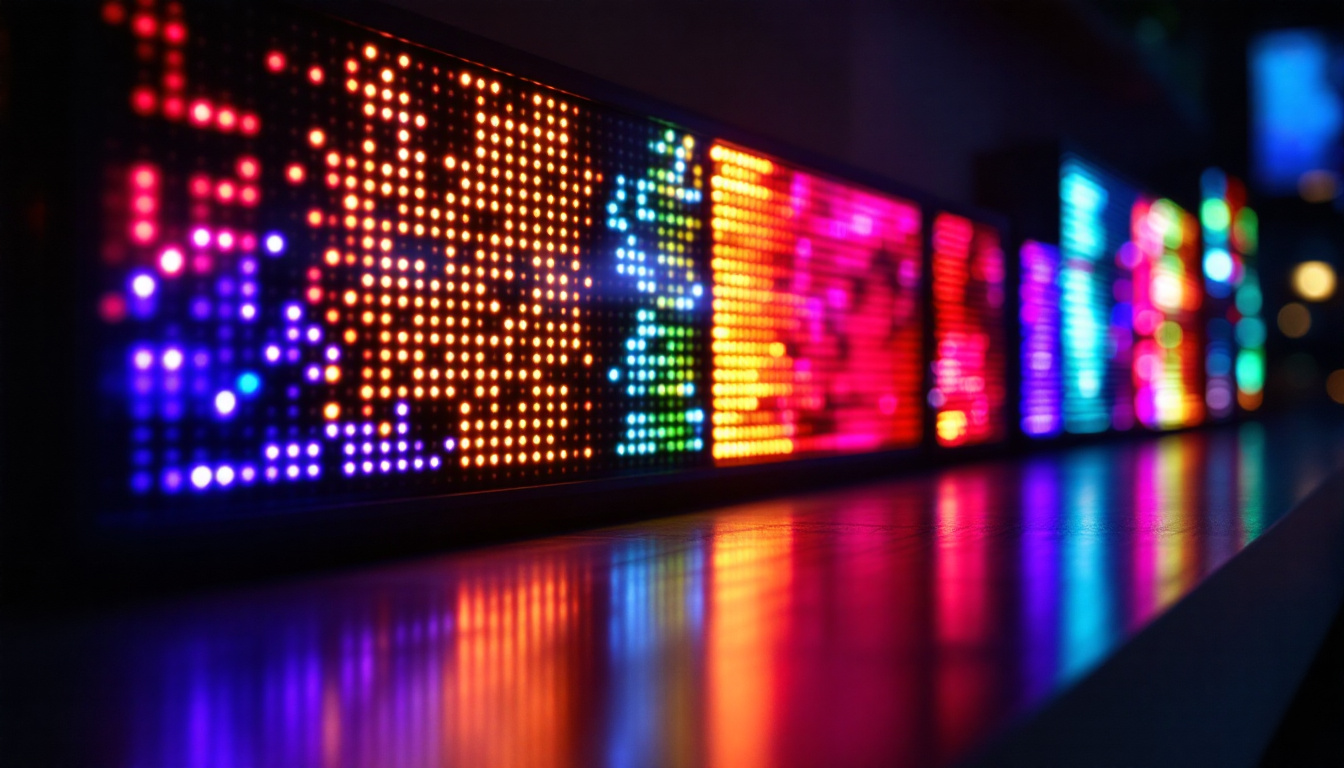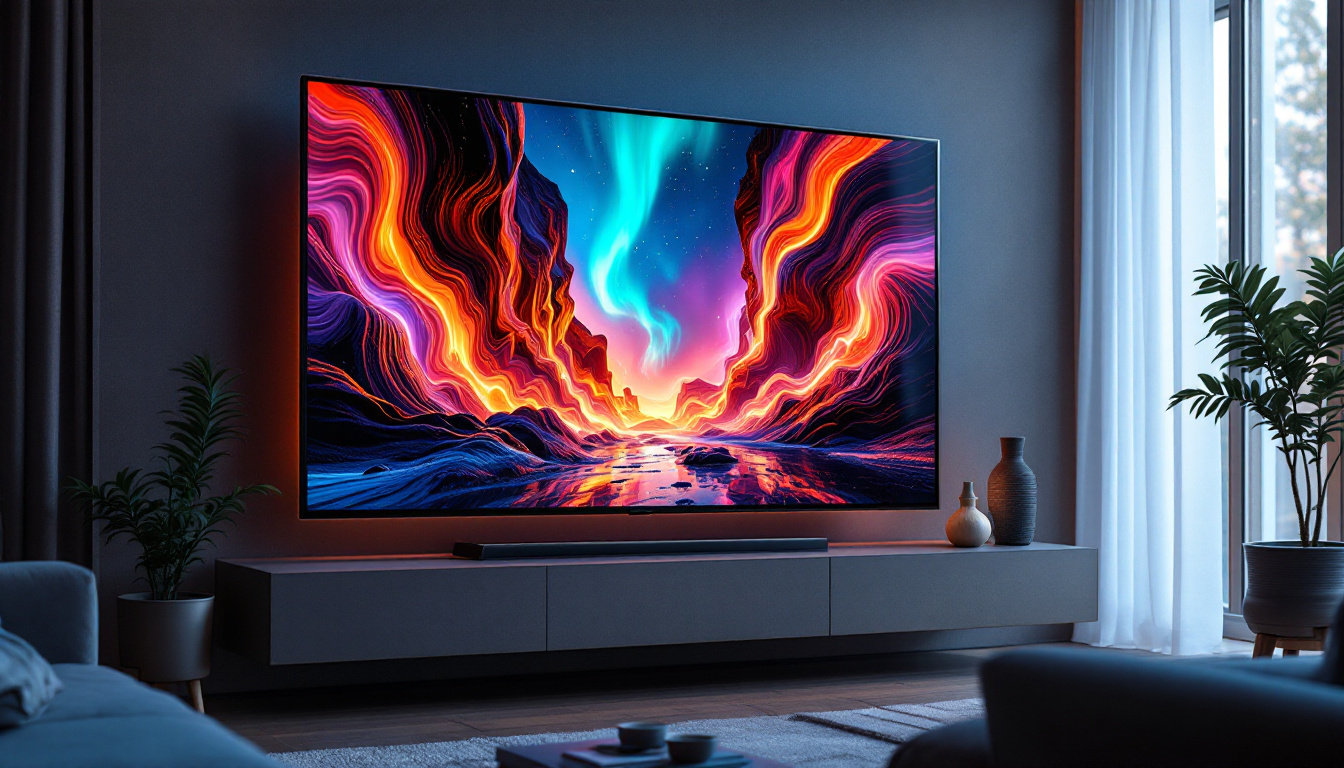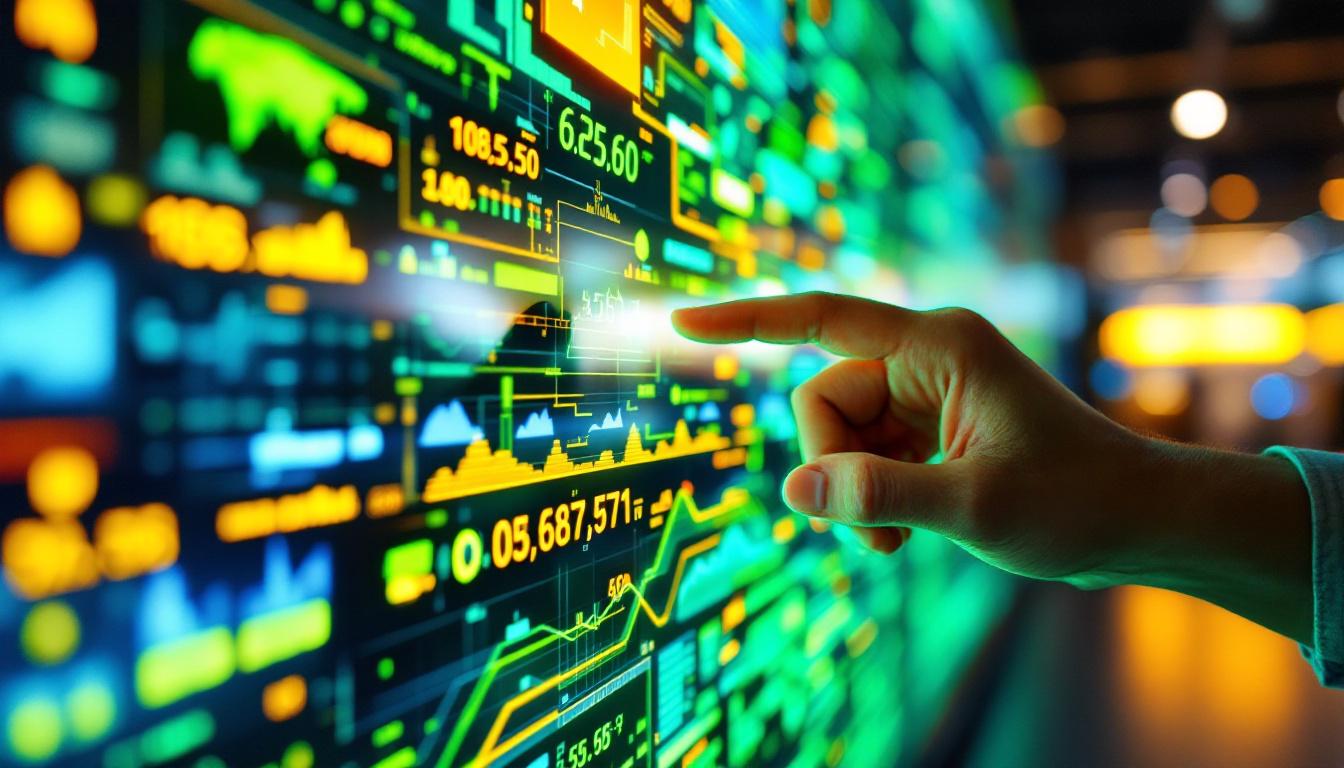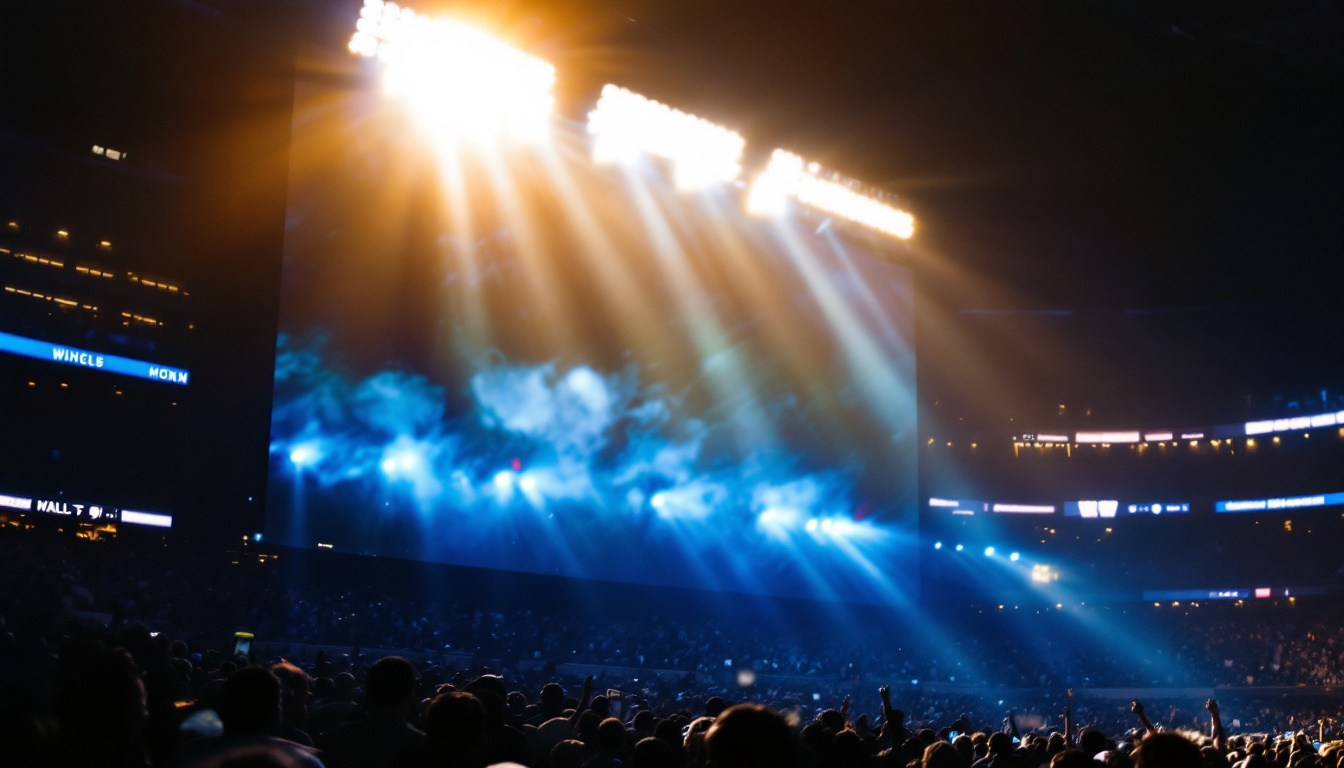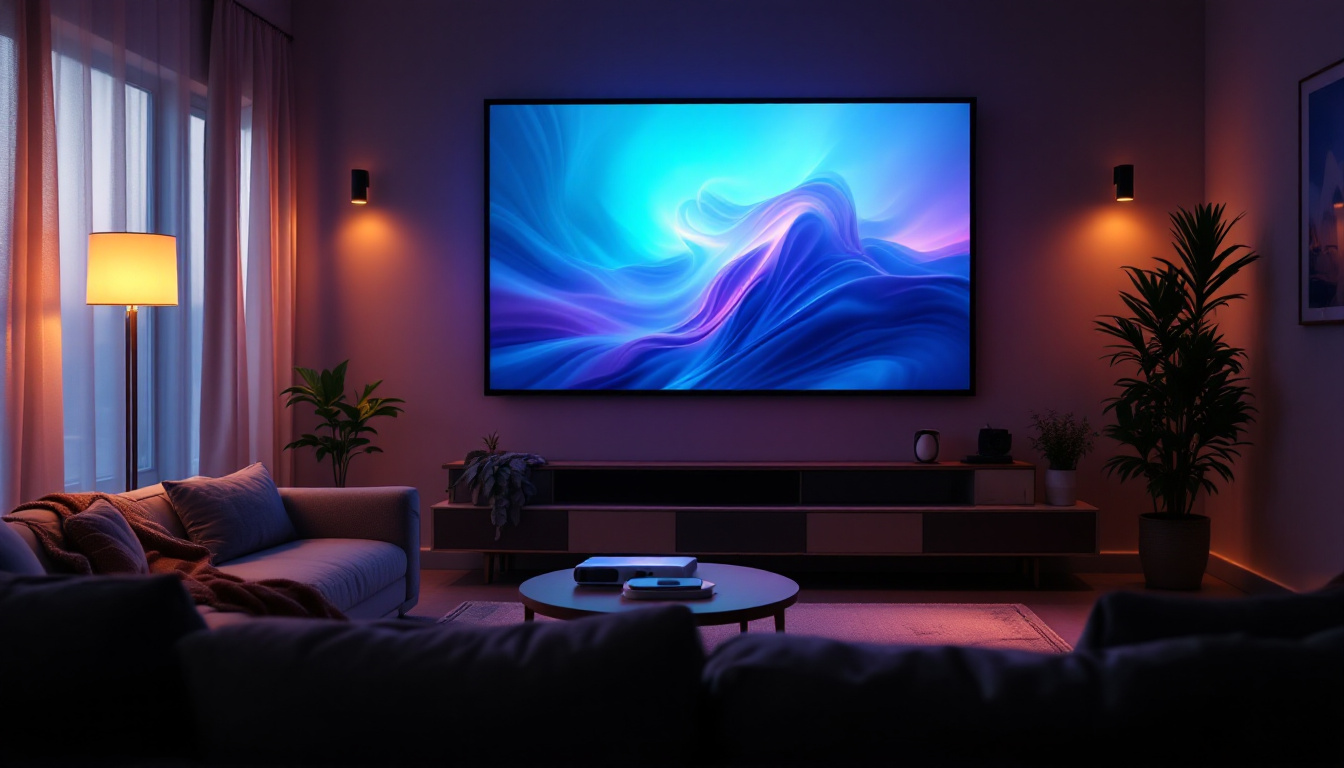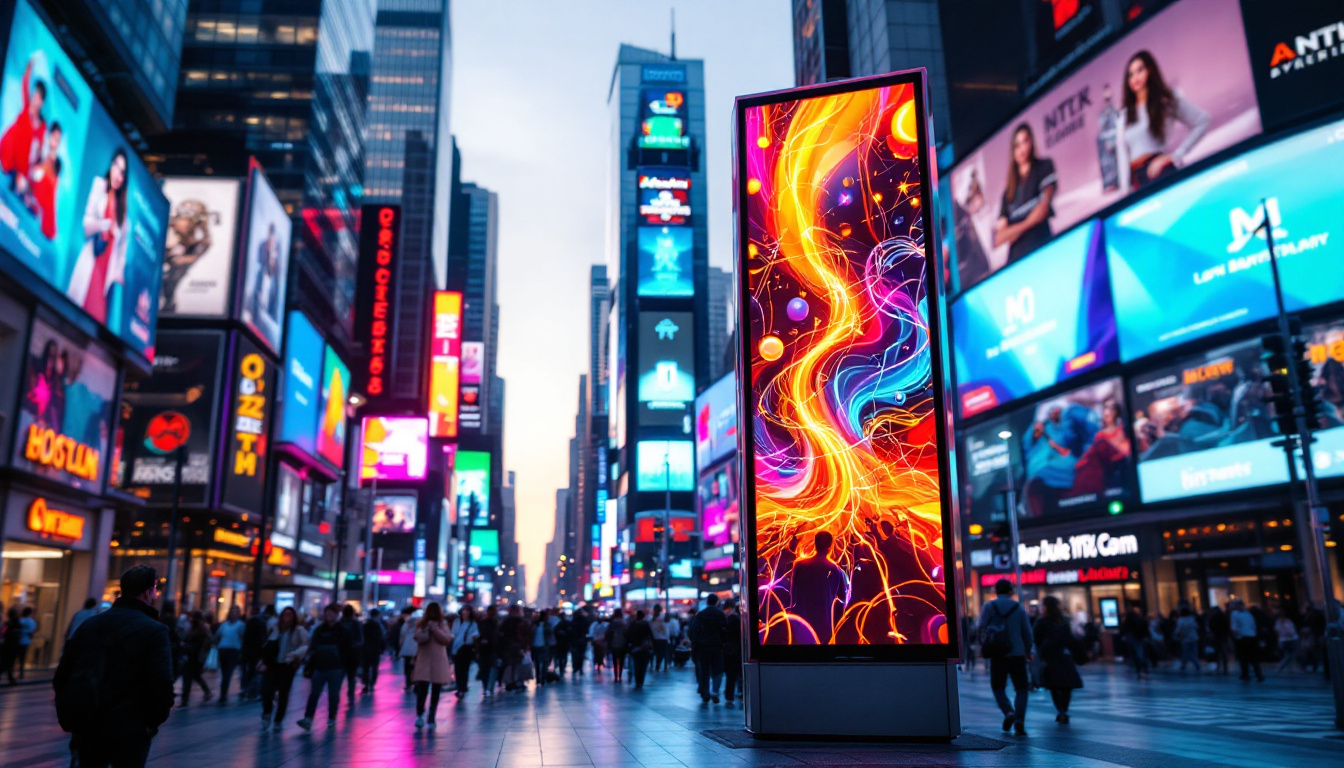In today’s digital age, LED displays have become ubiquitous, transforming the way information is conveyed across various platforms. From advertising billboards to indoor screens in corporate settings, LED technology has revolutionized visual communication. This article delves into the intricacies of LED displays, exploring their types, advantages, applications, and future trends.
Understanding LED Technology
LED, or Light Emitting Diode, is a semiconductor device that emits light when an electric current passes through it. This technology has advanced significantly over the years, leading to the development of various types of LED displays that cater to different needs and environments. The versatility of LED technology has not only transformed the way we consume visual content but has also opened up new avenues for creativity in design and advertising.
From vibrant billboards lighting up city streets to dynamic screens in sports arenas, LED technology has become an integral part of modern visual communication. The energy efficiency of LEDs compared to traditional lighting sources means that they not only reduce electricity costs but also contribute to a more sustainable environment. As the demand for energy-efficient solutions grows, the adoption of LED technology is expected to rise even further, paving the way for innovations that enhance user experience.
How LED Displays Work
At the core of an LED display are thousands of tiny LED lights, which are grouped together in pixels. Each pixel consists of red, green, and blue (RGB) diodes, which can be mixed in various intensities to produce a wide spectrum of colors. When these pixels are activated in a sequence, they create images and videos that can be viewed from a distance. This color mixing capability allows for the creation of stunning visuals that can captivate audiences, making LED displays a popular choice for entertainment and advertising.
The brightness and clarity of LED displays are determined by the pixel pitch, which is the distance between the centers of two adjacent pixels. A smaller pixel pitch results in higher resolution and better image quality, making it ideal for close-up viewing. Additionally, advancements in technology have led to the development of high dynamic range (HDR) capabilities in LED displays, which enhance contrast and color accuracy, providing a more immersive viewing experience. This is particularly beneficial in environments where visual impact is crucial, such as in concert venues or immersive art installations.
Types of LED Displays
LED displays can be categorized into several types based on their application and installation. The most common types include:
- Outdoor LED Displays: Designed to withstand harsh weather conditions, these displays are often used for advertising and public information. They feature high brightness levels for visibility in direct sunlight. Furthermore, many outdoor LED displays are equipped with advanced technology to ensure that the colors remain vibrant and the images sharp, even in challenging lighting conditions.
- Indoor LED Displays: Typically used in shopping malls, airports, and corporate environments, these displays offer high resolution and are designed for close viewing distances. Indoor displays often incorporate features such as touch sensitivity and interactivity, allowing users to engage with the content in a more meaningful way, which can enhance customer experience and drive engagement.
- Transparent LED Displays: This innovative technology allows for the display of images and videos while maintaining visibility through the screen. They are often used in retail environments to showcase products without obstructing the view. The unique design of transparent LED displays not only serves functional purposes but also adds an aesthetic appeal, creating a futuristic look that attracts attention and enhances brand visibility.
Advantages of LED Displays
The rise of LED displays can be attributed to their numerous advantages over traditional display technologies. These benefits make them a preferred choice for many businesses and organizations.
Energy Efficiency
One of the most significant advantages of LED displays is their energy efficiency. Compared to traditional incandescent and fluorescent lights, LEDs consume significantly less power. This not only reduces electricity costs but also minimizes the environmental impact. In fact, studies have shown that switching to LED technology can reduce energy consumption by up to 80%, making it a more sustainable option for both residential and commercial use. This energy savings translates into lower carbon footprints, contributing to a greener planet.
Longevity and Durability
LED displays are known for their long lifespan, often lasting up to 100,000 hours or more. This durability makes them an excellent investment, as they require less frequent replacements. Additionally, they are more resistant to shock, vibrations, and temperature fluctuations, making them suitable for various environments. This robustness is particularly beneficial for outdoor applications, where displays are exposed to harsh weather conditions. Furthermore, the low maintenance requirements associated with LED technology mean that businesses can allocate resources more effectively, focusing on growth and innovation rather than constant upkeep.
High Brightness and Contrast
LED displays offer exceptional brightness levels, ensuring visibility even in bright outdoor conditions. The high contrast ratio enhances image quality, making colors appear more vibrant and details clearer. This is particularly important for advertising and informational displays that need to capture attention quickly. Moreover, the ability to adjust brightness levels dynamically allows for optimal viewing experiences in various lighting conditions, from bright sunlight to dimly lit environments. This adaptability not only improves the effectiveness of advertising campaigns but also enhances user engagement, as viewers are more likely to interact with content that is visually appealing and easy to read.
Applications of LED Displays
The versatility of LED displays allows them to be used in a wide range of applications across different industries. Here are some of the most common uses:
Advertising and Marketing
LED displays have become a staple in advertising, providing dynamic content that can be updated in real-time. Businesses utilize these displays to promote products, announce sales, and engage with customers. The ability to display videos and animations makes LED advertising more captivating compared to static billboards.
Events and Entertainment
In the entertainment industry, LED displays are essential for concerts, sports events, and festivals. They provide large-scale visuals that enhance the audience experience. From stage backdrops to scoreboards, these displays ensure that everyone can see the action, regardless of their location in the venue.
Corporate and Educational Settings
Many corporations and educational institutions have adopted LED displays for presentations, meetings, and lectures. These displays facilitate better communication of ideas and information, allowing for interactive and engaging presentations. Additionally, they can be used for digital signage to convey important messages to employees and students.
Future Trends in LED Display Technology
The LED display market continues to evolve, with new technologies and innovations emerging regularly. Here are some trends to watch for in the coming years:
Advancements in MicroLED Technology
MicroLED technology is poised to revolutionize the display industry. By using microscopic LEDs, this technology offers higher resolution and better color accuracy than traditional LED displays. MicroLEDs can also be combined to create flexible and curved displays, opening up new possibilities for design and application.
Integration with Smart Technology
As the Internet of Things (IoT) continues to grow, LED displays are increasingly being integrated with smart technology. This allows for remote control, real-time content updates, and data analytics. Businesses can tailor their messaging based on audience engagement and preferences, leading to more effective communication strategies.
Environmental Sustainability
With a growing emphasis on sustainability, manufacturers are focusing on creating eco-friendly LED displays. This includes using recyclable materials and reducing energy consumption. As consumers become more environmentally conscious, the demand for sustainable technology will likely drive innovation in the LED display market.
Choosing the Right LED Display Solution
Selecting the appropriate LED display solution involves considering various factors that align with specific needs and objectives. Here are some key considerations:
Determining the Purpose
The first step in choosing an LED display is to define its purpose. Is it for advertising, information dissemination, or entertainment? Understanding the primary function will guide the selection of the display type, size, and features.
Assessing Location and Environment
Location plays a crucial role in determining the type of LED display required. Outdoor displays must be weather-resistant and bright enough for visibility in sunlight, while indoor displays can focus on resolution and color accuracy. Evaluating the environment helps ensure the display performs optimally.
Budget Considerations
Budget constraints are a reality for many organizations. It’s essential to balance quality and cost when selecting an LED display. While high-end models may offer superior features, there are also budget-friendly options that provide excellent performance for specific applications.
Installation and Maintenance of LED Displays
Proper installation and maintenance are critical to ensuring the longevity and performance of LED displays. Here are some important aspects to consider:
Professional Installation
Installing an LED display involves more than just mounting it on a wall. Professional installation ensures that the display is correctly calibrated and integrated with existing systems. It also addresses safety concerns, particularly for large outdoor displays that require specialized equipment.
Regular Maintenance
To keep LED displays functioning optimally, regular maintenance is essential. This includes cleaning the screens, checking for dead pixels, and ensuring that the software is up to date. Many manufacturers offer maintenance contracts to assist organizations in managing their displays effectively.
Monitoring Performance
Monitoring the performance of LED displays can help identify issues before they become significant problems. Utilizing software that tracks usage, brightness levels, and operational status can provide valuable insights and help maintain display quality over time.
Conclusion
LED displays have transformed the landscape of visual communication, offering unparalleled advantages in terms of energy efficiency, durability, and versatility. As technology continues to advance, the potential applications for LED displays will only expand, making them an integral part of modern life.
Whether used for advertising, entertainment, or information dissemination, LED displays provide a dynamic and engaging way to connect with audiences. By understanding the various types, advantages, and future trends, organizations can make informed decisions about integrating LED display solutions into their strategies.
As the demand for innovative visual solutions grows, embracing LED technology will undoubtedly play a crucial role in shaping the future of communication.
Discover LumenMatrix’s Innovative LED Display Solutions
Ready to elevate your visual communication strategy with cutting-edge LED technology? LumenMatrix offers a comprehensive range of LED display solutions tailored to meet your needs. From Indoor and Outdoor LED Wall Displays to specialized options like Vehicle, Sports, and Floor LED Displays, our products are designed to captivate your audience and amplify your message. Experience the future of digital signage with our Custom, All-in-One, and Transparent LED Displays. Check out LumenMatrix LED Display Solutions today and transform your brand’s visibility with our state-of-the-art modules.

